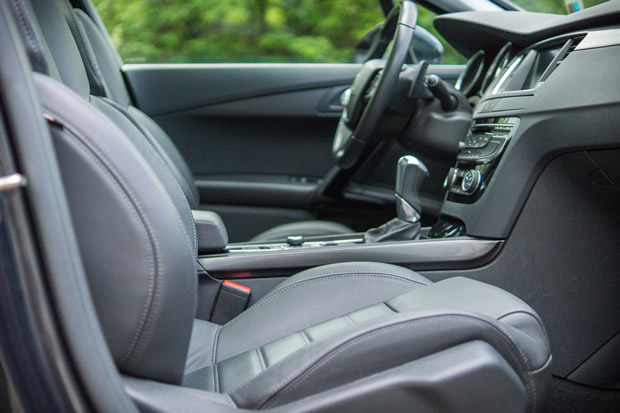Testing in real time: The driver of automotive apps
These days when we get behind the wheel of our cars, it’s often not just a case of turning on the radio and cruising onto our destinations. You can make a call before you depart, check that the road ahead is clear with bright sunshine, as well as turn on entertainment for your passengers, all via digital infotainment systems.
Author: Christopher P. Willis, CMO at Perfecto
As vehicles begin to interact with us, and other vehicles and infrastructure around them, the capabilities of the car for the customer will only continue to advance.
The smartphone is one of the key integrational tools allowing this new kind of communication. Utilising apps, the smartphone connects to the in-car system to enable these futuristic capabilities, improving the driver experience. However, manufactures must guarantee that this this technology is thoroughly tested and brought to market quickly – ensuring the user experience is as optimised as it can be from the outset, in order to provide a high-quality experience.
How does it feel on the inside?
Cars are an emotional, brand-driven sale. Sports cars can make us feel cool and smooth, while purchasing a 4×4 may make us feel rugged and adventurous. Often vehicle purchases are not about getting from A to B, its how they affect the lives of the consumer.
The overall experience is therefore an important aspect of a consumers’ satisfaction when buying a car, and it is vital that it matches up to the brand personality that users are promised. The in-car experience is an extension of the brand and should be treated as such if companies are to secure loyalty from their users.
Matching a uniformed brand
Auto manufacturers must make sure that the apps on their dashboards match the experience that the rest of the car promises its customers. For example, a car that is marketed as a secure, dependable family vehicle should have a telematics system that includes entertainment apps for children, as well as child safety apps like automatic safety locking that parents can activate from their smartphones. For rugged, outdoor adventure vehicles, telematics systems will need to provide top-notch navigation and extreme weather warnings in remote locations.
These targeted telematics solutions will not only deliver the full, all-encompassing brand experience that users crave, but can also be a stream of additional revenue for auto manufacturers. According to recent IHS global research, nearly 75 per cent of consumers indicated they would also be willing to pay for updates to an in-vehicle app. The more value the app can deliver to users, the more profitable it will be, and the key to creating that value is likely to be in apps that match the car and brand experience that drivers have bought into.

Overcoming the hurdles
There are numerous technical challenges for companies trying to deliver this comprehensive digital experience as part of their brand. It requires the multi-tier architecture between mobile device and car to operate in complete cohesion. Apps must also work reliably across different car models and different smartphones, creating huge challenges for companies looking to ensure that all users have a seamless, consistent experience.
As part of this challenge, ensuring swift response times is of particular significance for auto manufacturers when looking at the communication between apps and dashboard infrastructure. With commands passing from a smartphone to a remote server through to the dashboard, every millisecond counts.
Another key challenge is that auto manufacturers typically operate on a yearly release cycle, with a new model of each car being sold into the market annually. However, digitalisation is changing the way that auto manufacturers work. Due to the demand for infotainment products, auto manufacturers will need to shift to more frequent updates of their apps and therefore shorter testing and development cycles.
Testing is the key
Clearly, testing is a crucial part of ensuring that apps function consistently across these digital devices. Auto manufacturers need to know that their tests reflect users’ real experiences, and will therefore need to use testing tools that can ensure this.
Testing systems should also be able to mirror the full user experience, including use of multiple apps at once. For example, auto manufacturers need to know how a navigation app responds when a phone call interrupts.
Even beyond this, in today’s marketplace, automotive manufacturers are global, and need to ensure that their telematics systems and apps work seamlessly for users anywhere.
For example, if an American company is selling cars in Japan, they need to be able to test the app experience of users in Japan accurately, including testing Japanese cell phone networks. They will also need to compare experiences across disparate geographical locations and marketplaces, such as American manufacturers need to ensure that an app will work as well in Japan as it does in San Francisco.
Dashing to grasp the opportunity
The opportunities that continue to be created by connected and driverless cars are growing all the time. Automotive manufacturers are wise to this, but only by deploying telematics and creating a uniformed branded experience across hardware and software, will they be able to seize these openings.
Manufacturers must value not just the apps themselves, but the resulting digital experience delivered to the customer. This experience needs to be smooth and unified, uniting the company’s brand and actually offering drivers something that enhances how they drive every day. This will only be realised though through the use of the proper testing tools which will ensure apps are prepared for whatever situation they find themselves in, driving from A to B and beyond.







